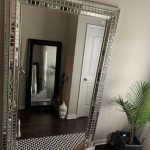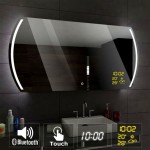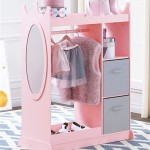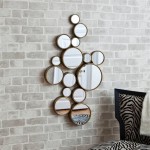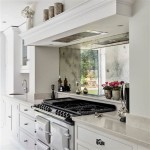Can You Put Chalkboard Paint On A Mirror?
Applying chalkboard paint to a mirror presents a unique set of challenges due to the smooth, non-porous nature of glass. While it's possible to achieve a chalkboard surface on a mirror, careful preparation and the correct materials are crucial for a successful and durable result. This article will explore the process, potential pitfalls, and alternative solutions for creating a writable surface on a mirror.
The primary difficulty in applying chalkboard paint to a mirror lies in achieving adequate adhesion. Standard chalkboard paint is designed for porous surfaces like wood or drywall, which allow the paint to grip and bond. Glass, however, is inherently smooth and non-porous, making it difficult for the paint to adhere properly. Without proper preparation, the chalkboard paint is likely to chip, peel, or flake off the mirror surface.
Before applying chalkboard paint, the mirror surface must be thoroughly cleaned and prepared. This involves removing any dust, dirt, or fingerprints with a glass cleaner. Following this, lightly sanding the mirror's surface with fine-grit sandpaper creates microscopic scratches that provide the paint with a better grip. This step is essential for enhancing adhesion and preventing premature peeling. After sanding, the mirror should be cleaned again to remove any residual glass dust.
Choosing the correct type of chalkboard paint is also a critical factor. While standard chalkboard paint can be used, a specialized primer designed for glass or smooth surfaces is highly recommended. This primer creates a bonding layer between the glass and the chalkboard paint, significantly improving adhesion. Applying one or two coats of primer, allowing adequate drying time between each coat, is essential for optimal results.
Once the primer is thoroughly dry, apply the chalkboard paint in thin, even coats. Multiple thin coats are preferable to one thick coat, as this helps prevent cracking and ensures even coverage. Allow each coat of chalkboard paint to dry completely before applying the next. Following the manufacturer’s recommended drying times is essential for achieving a durable and long-lasting finish.
After the final coat of chalkboard paint has dried, a process called “seasoning” the chalkboard is recommended. This involves rubbing the entire surface of the chalkboard with the side of a piece of chalk and then erasing it. Seasoning creates a thin layer of chalk dust that fills the microscopic pores of the chalkboard paint, preventing future chalk marks from staining or becoming difficult to erase.
While applying chalkboard paint directly to a mirror is possible, several potential problems can arise. Even with meticulous preparation, the paint may still be prone to chipping or peeling, especially in high-traffic areas or with frequent use. The smooth surface of the glass can also make erasing chalk marks more challenging compared to a traditional chalkboard surface. In some cases, "ghosting" can occur, where faint chalk marks remain visible even after erasing.
Given the potential challenges, exploring alternative methods for creating a writable surface on a mirror can be beneficial. One option is to apply chalkboard paint to a piece of glass or acrylic cut to the same size as the mirror and then mount it over the mirror surface. This preserves the mirror's reflectivity while providing a separate, dedicated chalkboard surface. Another option involves using chalkboard contact paper, which adheres to the mirror surface and provides a writable area. While contact paper may not be as durable as painted surfaces, it offers a simpler and less permanent solution.
A further alternative involves using a framed chalkboard or whiteboard that can be hung over the mirror. This approach is particularly suitable for situations where preserving the mirror's full functionality is a priority. The chalkboard or whiteboard can be easily removed when not needed, allowing access to the mirror beneath.
Choosing between painting the mirror directly and using alternative methods depends on several factors, including the desired level of permanence, the frequency of use, and the importance of preserving the mirror’s reflective qualities. Carefully considering these factors will ensure the chosen method provides a functional and aesthetically pleasing solution.
Proper preparation and material selection are crucial when applying chalkboard paint to a mirror. Priming the surface and applying thin, even coats of paint are vital for achieving a durable finish. Considering the potential challenges associated with this approach and exploring alternative solutions, such as using separate chalkboard surfaces or contact paper, can be beneficial in determining the most appropriate method for creating a writable surface on a mirror.
Paint A Mirror With Chalkboard Best For Glass Joyfully Treasured

How To Turn A Mirror Into Chalkboard Field Court

Turn A Mirror Into Chalkboard Organizing Station Tatertots And Jello

Diy Mirror To Chalkboard Pleasure In Simple Things

Chalk Paint Mirror Centsational Style

How To Turn An Old Mirror Into A Chalkboard Making It In The Mountains

How To Turn A Mirror Into Chalkboard Field Court

Painting A Mirror With Chalkboard Paint Jenny Komenda

Grandma S Mirror Turned Chalkboard Confessions Of A Serial Do It Yourselfer

How To Paint A Mirror Frame With Chalk

